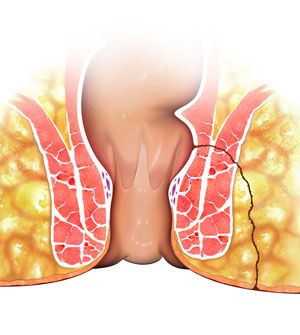
What is Anal Fistula?
An anal fistula is an abnormal tunnel that originates from the anal canal and opens onto the surface of the skin near the anus. Most anal fistulas are caused by infection of an anal gland that does not heal properly. The infection results in an abscess that tunnels its way onto the skin surface to drain out the pus.
Causes of Anal Fistula
The conditions that can cause an anal fistula include:
- Anal abscess that does not heal
- Crohn’s disease
- Sexually transmitted diseases
- Tuberculosis
- Trauma
- Radiation treatment for cancer
- Cancer
- Diverticulitis
- HIV related bowel disease
Symptoms of Anal Fistula
The various symptoms of anal fistula include:
- Anal Pain
- Bleeding near the anal region
- Swelling around the anus
- Frequent anal abscesses
- Painful bowel movements or urination
- Skin irritation mainly around the anal region
- Fever, shivering and an overall exhausted feeling
- Presence of a hole near the anus secreting a liquid that has a foul odour
Diagnosis of Anal Fistula
Your doctor can usually diagnose an anal fistula by examining the area around the anus and checking your medical history. During the physical examination, your doctor will be checking for signs of bleeding or other fluid secretions.
Other tests to diagnose an anal fistula include:
- Anoscopy: This test involves the placement of a rigid tubular instrument into the anus to view the inside of the anal canal.
- Ultrasound or MRI scans: These are advanced imaging studies used for a better view of the fistula tract.
- Colonoscopy: In this procedure, a flexible instrument is inserted into the colon via the anus, under conscious sedation by using a type of light anaesthetic.
- Fistulography: In this test, a real-time X-ray of the fistula is obtained after injecting a contrast solution into the fistula.
Treatment of Anal Fistula
Surgery is the most effective treatment option. The surgery aims to completely mend the anal fistula without damaging the anal splinter muscles and avoid any recurrence in the future.
Some surgeries include:
- Fistulotomy: In this method, the surgeon makes an incision over the fistula and removes the infected tissues completely before converting the tunnel into a groove.
- Advancement rectal flap: In this procedure, the surgeon constructs a flap from the rectal wall and uses this to cover the internal opening of the fistula.
- Seton placement: In this procedure, a piece of latex or silk surgical string is inserted into the fistula which allows the pus to drain out completely.
- Fibrin glue and collagen plug: In this procedure, the internal opening of the fistula is stitched shut after removing the infection, and special glue created from a fibrous protein is injected through the external opening before sealing it off using a plug of collagen protein.
Prevention of Anal Fistula
The various measures to prevent the formation of an anal fistula include:
- Drinking plenty of fluids
- Eating a fibre-rich diet
- Keeping the anal region dry
- Avoiding straining while passing stools
- Exercising regularly






